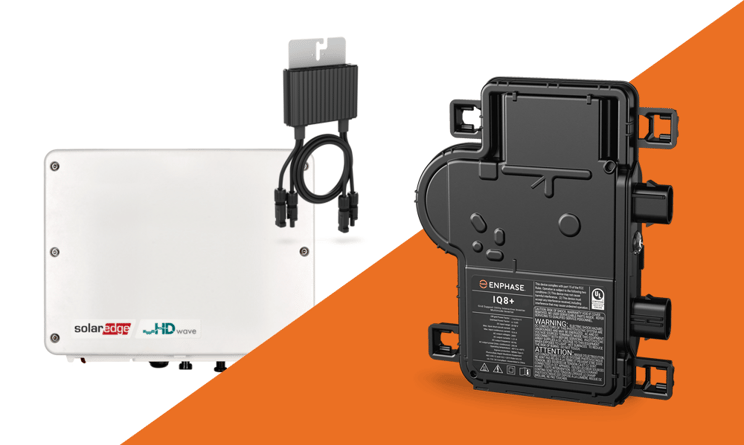In a perfect world, UK roofs would all face south, with a 35° pitch and no shading in sight. But we don’t live in a perfect world. As solar installers, we have to find clever ways to maximise the potential power from roofs of all make ups, orientations and shaded spots.
The most common suggestion to do this is with micro-inverters or power optimisers, which are designed to improve performance at the panel level. But there are risks, such as high costs to access and repair them if they fail, and sometimes you’re better off with a regular string inverter.
So which is the best solution? Let’s focus on the most popular brands, and compare SolarEdge optimisers vs Enphase micro-inverters.
Standard string inverters and shading
Before diving into optimisation, it is worth being aware of a ‘traditional’ solar PV system and how a string inverter can be effective in mitigating shade and generating a high output. The combination of bypass diodes, half cut cells, and advances in global power point tracking (GPPT) means that in certain shade and designs, a string inverter (such as brands like Fronius, Growatt or Solis) can exhibit a very similar percentage loss due to shading compared to an optimised array.
In a traditional configuration, the solar PV modules are wired in strings (series connections of panels) and the strings are wired to one central inverter via maximum power point trackers (MPPT). The MPPTs will continually adjust the voltage and current from the panels to achieve the maximum output of the strings whilst the central inverter will handle the inversion from DC to AC.
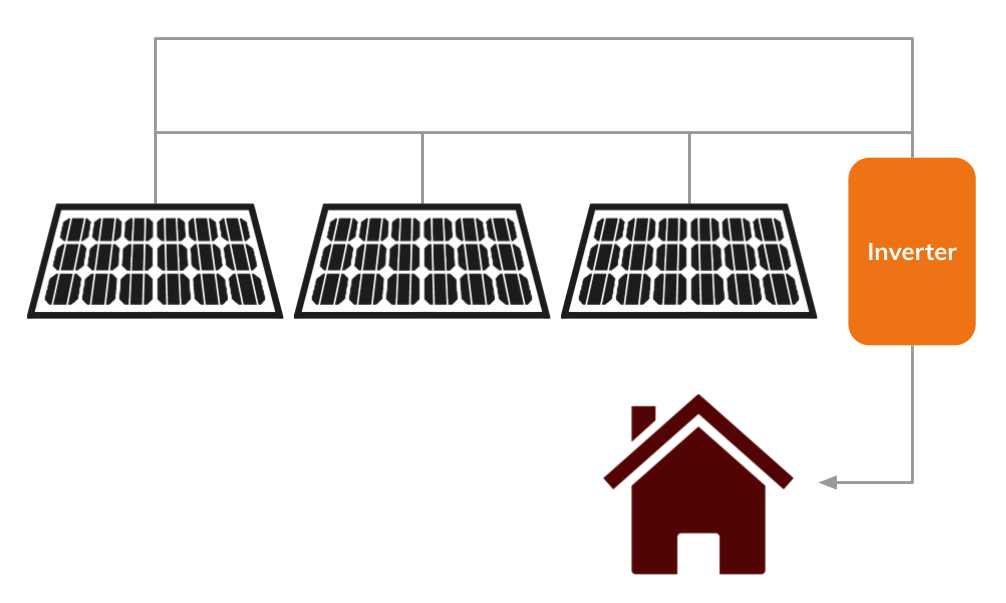
This configuration is nearly always our recommendation when the panels are installed on one roof face and there is little to no shading. However, where shading is more extreme or there are complications with multiple orientations, the question becomes: is SolarEdge or Enphase a better choice?
Solar panel optimisers vs micro-inverters
Panel optimisers, such as those manufactured by SolarEdge, and micro-inverters manufactured by Enphase have a few similarities that aren’t shared with standard string inverters:
- Power electronics installed behind each panel, which allows for the performance or yield of each panel to be maximised.
- Panel level monitoring, which is not only advantageous for the more granular data for a deeper analysis, but can also be a very useful asset in fault finding and alerts at the module level.
- Both SolarEdge and Enphase systems should generate more energy when implemented in place of a string inverter, as they optimise the performance of each individual panel, whereas a string inverter will optimise the performance of a string of panels. This difference in unshaded conditions can be minimal and difficult to justify the higher component and possible maintenance costs, however in strongly shaded conditions there certainly can be a fairly significant difference in performance.
The main difference between SolarEdge and Enphase systems is the function of their specific module level power electronics:
- SolarEdge systems have an optimiser located behind each panel but still have a central inverter (similar to a string inverter). The optimiser maximises the output of each panel via a DC-DC conversion, but the inversion required for the energy to be ‘useful’ is completed by the central inverter.
- An Enphase system has a small inverter (known as micro-inverter) located behind each panel, which does both the optimisation and inverting, therefore requiring no centralised inverter.
Micro-inverter system:
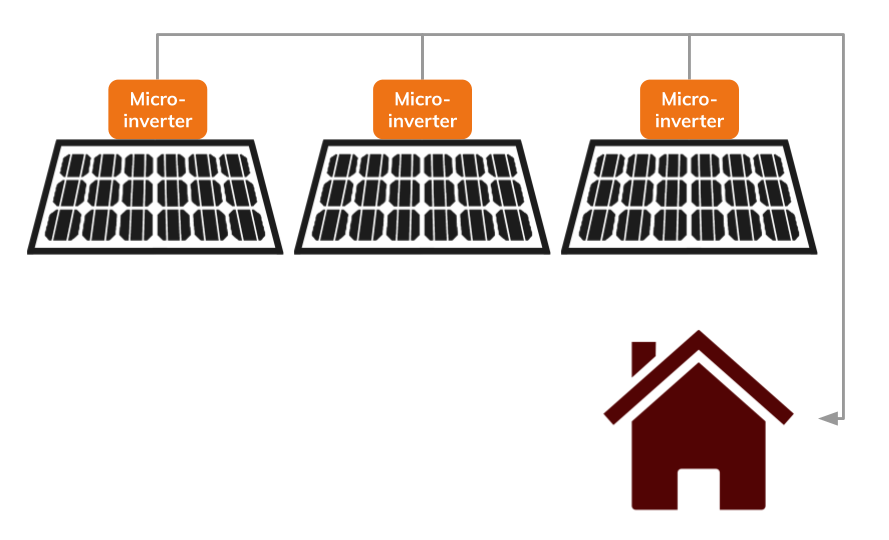
Power optimiser system:
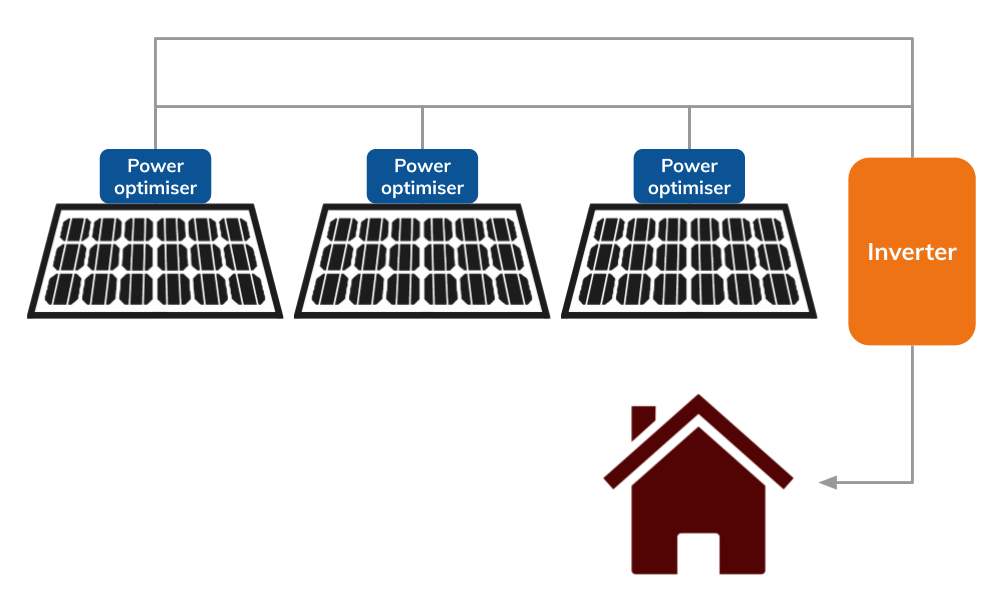
Enphase and SolarEdge design considerations
Enphase and SolarEdge’s differing module level power electronics tend to lead to a very similar level of performance; however the way that they operate requires different design considerations.
Enphase:
- Very minimal design considerations.
- Must ensure a suitable micro-inverter is paired with the panel choice.
- Very easily expandable due to no ‘central inverter’.
SolarEdge:
- Selection of a suitable power optimiser to be paired with the panel choice.
- Minimum number of panels per string (6-8 depending on the optimiser selected).
- Must have at least six panels in the sun to avoid voltage blocking or worse.
- Maximum of 5.7kW of panels per string (roughly 14-18, subject to panel rating).
- Strings connected to the same inverter can’t have more than a 2kW differential of panels per string.
- Can oversize the panel rating up to 200% of the inverter rating.
These design considerations ultimately make Enphase a more flexible solution as they can be successfully utilised in any scenario, whereas SolarEdge systems have to be more thoughtfully deployed. However, one of the main advantages of a SolarEdge system is that its oversizing can be very useful if wanting to avoid prior grid permission or if receiving an underwhelming grid offer. The only downside to oversizing is that in spring and summer it is highly likely that the system will suffer from clipping, as the maximum output is governed by the inverter rating as opposed to the panel rating.
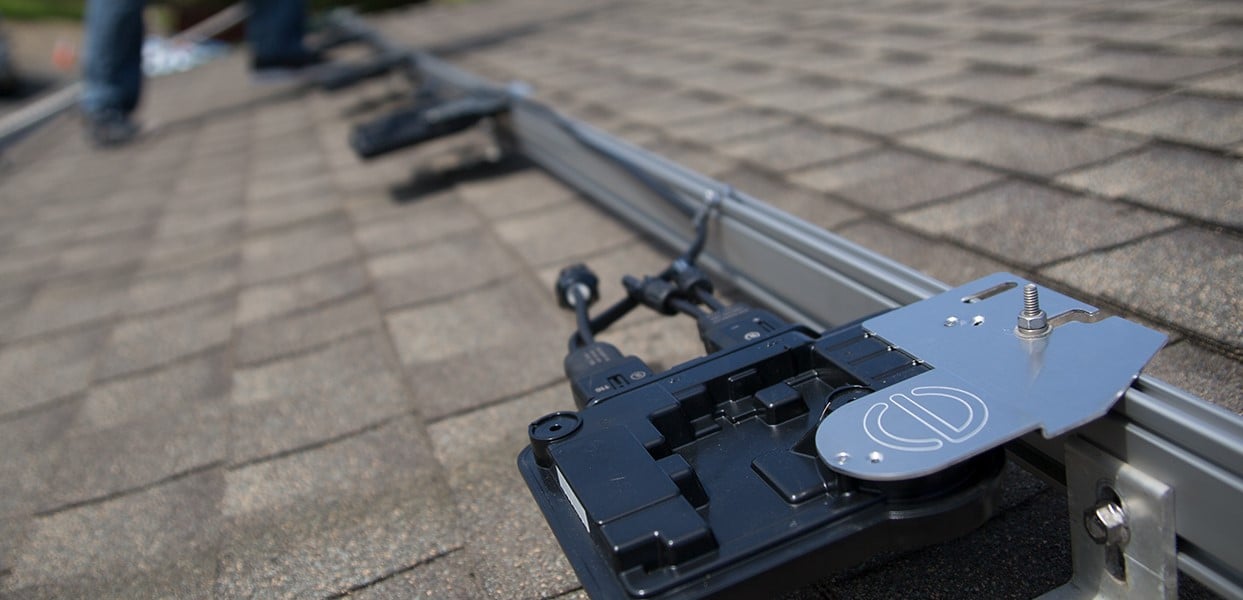
Image: Enphase.
Our recommendations
Due to the simplicity and cost effectiveness of a standard string inverter, this tends to be our recommendation in most situations, except when shading or multiple orientations become too complicated for a string inverter to manage.
In a scenario where a string inverter isn’t applicable, our recommendation would be to utilise Enphase micro-inverters largely due to their flexibility and apparent greater reliability. When installing module level power electronics at roof level, a key parameter is reliability, as if a failure arises this can cost in the region of £1,000 (allowing for scaffolding and labour) to replace.
Spirit has installed SolarEdge power optimisers on over 450 sites since 2011 and in this time period, roughly 10% of sites have experienced an optimiser issue, with just over 60% of these sites experiencing multiple optimiser faults (though these don’t all require replacements). Unfortunately, we are not in a position to quantify the Enphase reliability but anecdotal evidence seems to suggest that they have a lower failure rate. We would propose SolarEdge, however, if the site would benefit from significantly oversizing its panel rating to the inverter. The most likely case when this would be applicable is if the DNO response significantly limits the system size below the desired.
If you would like any advice about what inverter is most suitable for your installation, please get in touch with our team on 0118 951 4490. You may also like to download our contractor's guide to PV:




